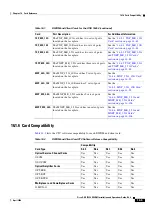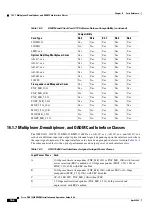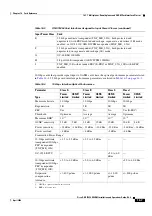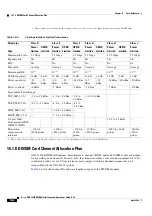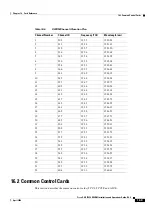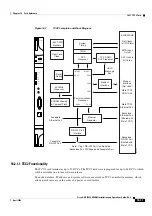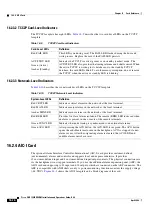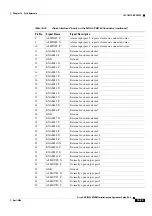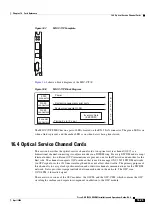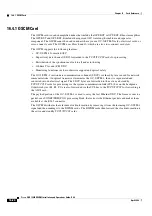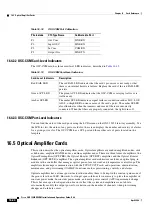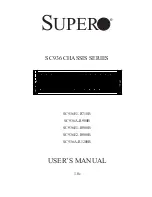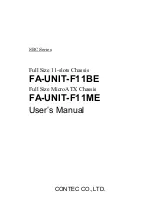
16-19
Cisco ONS 15454 DWDM Installation and Operations Guide, R6.0
April 2006
Chapter 16 Card Reference
16.2.4 AIC-I Card
•
Virtual wire entities: You can provision any environmental alarm input to raise a signal on any
virtual wire on external outputs 1 through 4 when the alarm input is an event. You can provision a
signal on any virtual wire as a trigger for an external control output.
You can also program the output alarm contacts (external controls) separately. In addition to
provisionable triggers, you can manually force each external output contact to open or close. Manual
operation takes precedence over any provisioned triggers that might be present.
Note
For ANSI shelves, the number of inputs and outputs can be increased using the AEP. The AEP is
connected to the shelf backplane and requires an external wire-wrap panel.
16.2.4.3 Orderwire
Orderwire allows a craftsperson to plug a phoneset into an ONS 15454 and communicate with
craftspeople working at other ONS 15454s or other facility equipment. The orderwire is a pulse code
modulation (PCM) encoded voice channel that uses E1 or E2 bytes in section/line overhead.
The AIC-I allows simultaneous use of both local (section overhead signal) and express (line overhead
channel) orderwire channels on a SONET/SDH ring or particular optics facility. Express orderwire also
allows communication via regeneration sites when the regenerator is not a Cisco device.
You can provision orderwire functions with CTC similar to the current provisioning model for
DCC/GCC channels. In CTC, you provision the orderwire communications network during ring turn-up
so that all NEs on the ring can reach one another. Orderwire terminations (that is, the optics facilities
that receive and process the orderwire channels) are provisionable. Both express and local orderwire can
be configured as on or off on a particular SONET/SDH
facility. The ONS 15454 supports up to four
orderwire channel terminations per shelf. This allows linear, single ring, dual ring, and small
hub-and-spoke configurations. Orderwire is not protected in ring topologies such as BLSR/MS-SPRing
and path protection/SNCP.
Caution
Do not configure orderwire loops. Orderwire loops cause feedback that disables the orderwire channel.
The ONS 15454 implementation of both local and express orderwire is broadcast in nature. The line acts
as a party line. Anyone who picks up the orderwire channel can communicate with all other participants
on the connected orderwire subnetwork. The local orderwire party line is separate from the express
orderwire party line. Up to four OC-N/STM-N facilities for each local and express orderwire are
provisionable as orderwire paths.
The AIC-I supports selective dual tone multifrequency (DTMF) dialing for telephony connectivity,
which causes one AIC-I card or all ONS 15454 AIC-I cards on the orderwire subnetwork to “ring.” The
ringer/buzzer resides on the AIC-I. There is also a “ring” LED that mimics the AIC-I ringer. It flashes
when a call is received on the orderwire subnetwork. A party line call is initiated by pressing
*0000
on
the DTMF pad. Individual dialing is initiated by pressing
*
and the individual four-digit number on the
DTMF pad.
shows the pins on the orderwire connector that correspond to the tip and ring orderwire
assignments.
Summary of Contents for ONS 15454 DWDM
Page 38: ...Figures xxxviii Cisco ONS 15454 DWDM Installation and Operations Guide R6 0 August 2005 ...
Page 54: ...Procedures liv Cisco ONS 15454 DWDM Installation and Operations Guide R6 0 August 2005 ...
Page 64: ... 64 Cisco ONS 15454 DWDM Installation and Operations Guide R6 0 August 2005 Chapter ...

